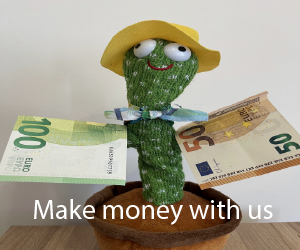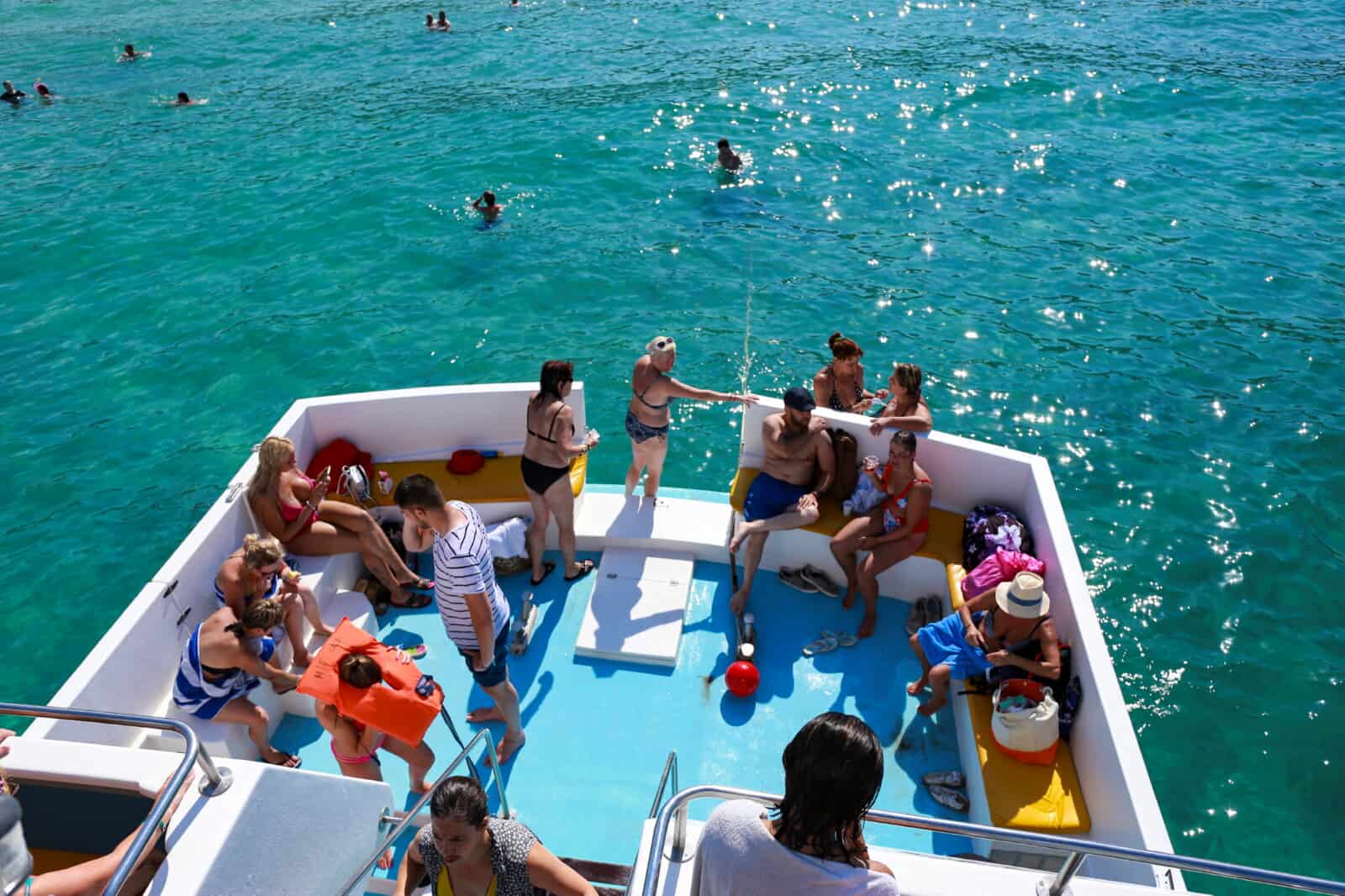
A special kind of art that does not fall into the category of “street art” has recently appeared in the alleys of old Nicosia. This is a small series of murals with a historiographical approach, which were created by the painter / muralist Fikos, “listening to the need of the old town for projects to highlight the cultural heritage of the place”.
His murals do not refer to a distant past, but to today's society and never have a political content but, as he tells us, the creation of these works itself is a political act. His goal is to create works that blend so harmoniously with the environment that it seems as if he has always been there, a reasoning that, according to him, is completely opposite to that of a street artist.
He considers that art is a shaping factor of society and an element that we would definitely like to discuss more in Cyprus, as long as this is done out of love for culture and not for reasons of political dispute. He even described as hopeful the entry of the dialogue about street art in the public sphere and the “sudden involvement of the people” with the subject. The Greek artist, who lives permanently in Cyprus, has left his “touches” in old Nicosia and Europe, but also in Thailand and Mexico.
Before speaking to “Parathyro” about his recent works, he feels the need to clarify something that he considers to be somewhat confused in the collective mind. He explains that graffiti is different, street art is different and muralism, created by painters, is different.
What are the main features of these three types of street art?
Graffiti started as a way of “marking” the areas where the graffiti went. Either in the form of a simple signature (tag), or in the form of a large, complex and, sometimes, calligraphic font, the message is one: “I was here too”.
Street art is, say, a more artistic and “pop” evolution of graffiti, but the logic that follows is largely the same: the projection of the artist's ego. Street artists usually seek to adopt a very recognizable painting element, such as, for example, the exclusive use of 2-3 colors (eg white – black – red) or the repetition of patterns (eg the exclusive illustration of child figures, with small variations, such as one holding a book, the other an umbrella, etc.), with the ultimate goal of distinguishing their work – product. Those who are familiar with the terms of marketing understand that we are no longer talking about art, but about branding. Like Coca-Cola and McDonald's, for example, they would never change their logo and colors, as this would risk losing their recognition, and therefore their power, so a street artist never changes this style. – logo no matter how many years pass, in any corner of the globe no matter what he paints. The problem, of course, is not the recognizability per se, on the contrary, having a personal painting style is something legitimate. The problem, in my opinion, starts when recognition becomes an end in itself. In the work of such an artist little space is left for “art” and evolution.
Finally, it is the mural art that, while it is basically a large-scale painting, maintains its own rules, such as the simplification of the form, the color contrast and the submission to the architectural form.
Where do you place your work?
I place my work in the third category. Although, as a child, I went through the graffiti phase, for many years I follow another logic, that of “distinction”. This means that in order to make a mural I take into account various factors such as the history and cultural context of the place, the shape of the wall and the surrounding area, the colors of the neighborhood, etc. In short, I do not impose myself on the urban landscape, I converse with it. My goal is to create a work that blends so harmoniously with the environment that it seems “as if it was always there” – a reasoning completely opposite to that of a street artist.
Why did you decide to start this series of murals?
As I deal professionally with the art of mural painting, most of the work I do is done after a relevant proposal – invitation. But when I find a little gap in my schedule, I seek small interventions in the city. Somehow I started a small series of murals in the old town of Nicosia which, unfortunately, was interrupted by the recent curfew. Listening to the city's need for projects to highlight the cultural heritage of the place, I came up with a thematic, historiographical approach.
What do you want to highlight through them?
Cyprus has an enviably rich history and cultural heritage, but my personal, perhaps wrong, feeling is that it does not stand out so much from the modern culture of the island, which focuses more on entrepreneurship. This situation could be improved relatively easily, in small steps, one at a time: one more visit to a theater or gallery, one more work of art in our home, one more book of traditional fairy tales for our children, one more mural in the city; we need the richness of history and art in our daily lives, not in museums. Reflecting on the above, one understands that these murals do not concern a distant past, but the society of today. If I may put it another way: the murals I paint may never have a political content, but the creation of these works itself is a political act.
What is the rationale behind your works and what is the significance behind your two most recent murals?
Choosing walls is always a difficult and time consuming process. My reasoning is not “let me do a work where it is enough for everyone to see it”. I look for visually autonomous walls that somehow seem “empty”, as if looking forward to accepting an artistic creation. After much searching, I found 3-4 of them in the old town.
The first is on Grammou Street, right on the border between the free side and the green line. It is a tribute to Nicosia, which in antiquity was called, among others, Ledra. It depicts Onassagoras (7th century), the only known king of Ledra, who is personified next to him. Then there is a fictional person, Lefkos (or Lefkon), who was supposedly the son of Ptolemy and rebuilt the city around 300 BC. As Nicosia did not have a well-known founder from antiquity, it seems that Lefkos was created by the need of the Byzantine people of Nicosia to have a founder, like any other city in Cyprus. Finally, we see the personalized city of Nicosia cut in half for obvious reasons.


The mural on Grammou Street in Old Nicosia. It is a tribute to Nicosia, which in antiquity was called, among others, Ledra
The second mural is located in Ermou and is an artistic dialogue with the poem of the Cypriot poet Pantelis Michanikos “O Onisilos”. Onisilos was the king of ancient Salamis. In 499 BC. united all the Cypriot kingdoms (except Amathus) and rebelled against the Persians who then ruled Cyprus. He was betrayed, fell in battle, and his head was hanged in the central square of Amathus. Later, his skull was turned into a hive by a swarm of bees, a sign, according to an oracle given to the Amathusians, that Onisilos should be recognized as a hero and buried with honors.


The mural on Ermou Street in Old Nicosia, an artistic dialogue with the poem of the Cypriot poet Pantelis Michanikos, “O Onisilos”
I find this poem so shocking and moving – the multiple symbolisms, the images it creates… Just a few months after the Turkish invasion of Cyprus (1974), the dead Onisilos – symbol of the Cypriot struggle for freedom – returns to life, looking at the same his skull, pondering not “to live or not to live”, but “to fight or not to fight” – was the lost fight worth the effort?
What is interesting, in my opinion, is that the poet does not blame the invaders or the Great Powers for this tragedy, but the Cypriot people, who, turning to consumer prosperity, could not listen to the messages of history. “Ten thousand bees were sent by Onisilos, and they all died on our thick skin, without feeling anything.” I find this truth so timeless, so universal. Anyone who closes their eyes and ears to the lessons of history – whether they are an individual, a social group or a nation – will face difficult days in the future. Onisilos still lives and sends us his bees to remind us of this truth – 47 years since the invasion, 47 bees on the mural.
Can we hear the sound of their wings?

“Wasted Love”, a mural at the end of Pentadaktylou Street
Amarakos is coming
After “Ledra” and “Onisilos”, Fikos will create another work, Amarakos, with which he will continue the above series of murals. The plan is expected to be made in March. The myth connects Amarakos with the homonymous aromatic plant that in ancient times grew in Cyprus and was used in the preparation of myrrh for the worship of the goddess Aphrodite. Specifically, Amarakos was a maker of wonderful myrrh. One day, while carrying one of the precious myrrh he was making in an alabaster container, he seemed careless. The container fell and a strong smell spread everywhere. The gods noticed the awkwardness of the perfumer because of the strong smell and decided to punish him. So they transformed it into a plant, the amarako, from which people made perfumes.
+ Fig is represented in Cyprus by The Edit Gallery | Instagram: @fikosantonios | www.fikos.gr




